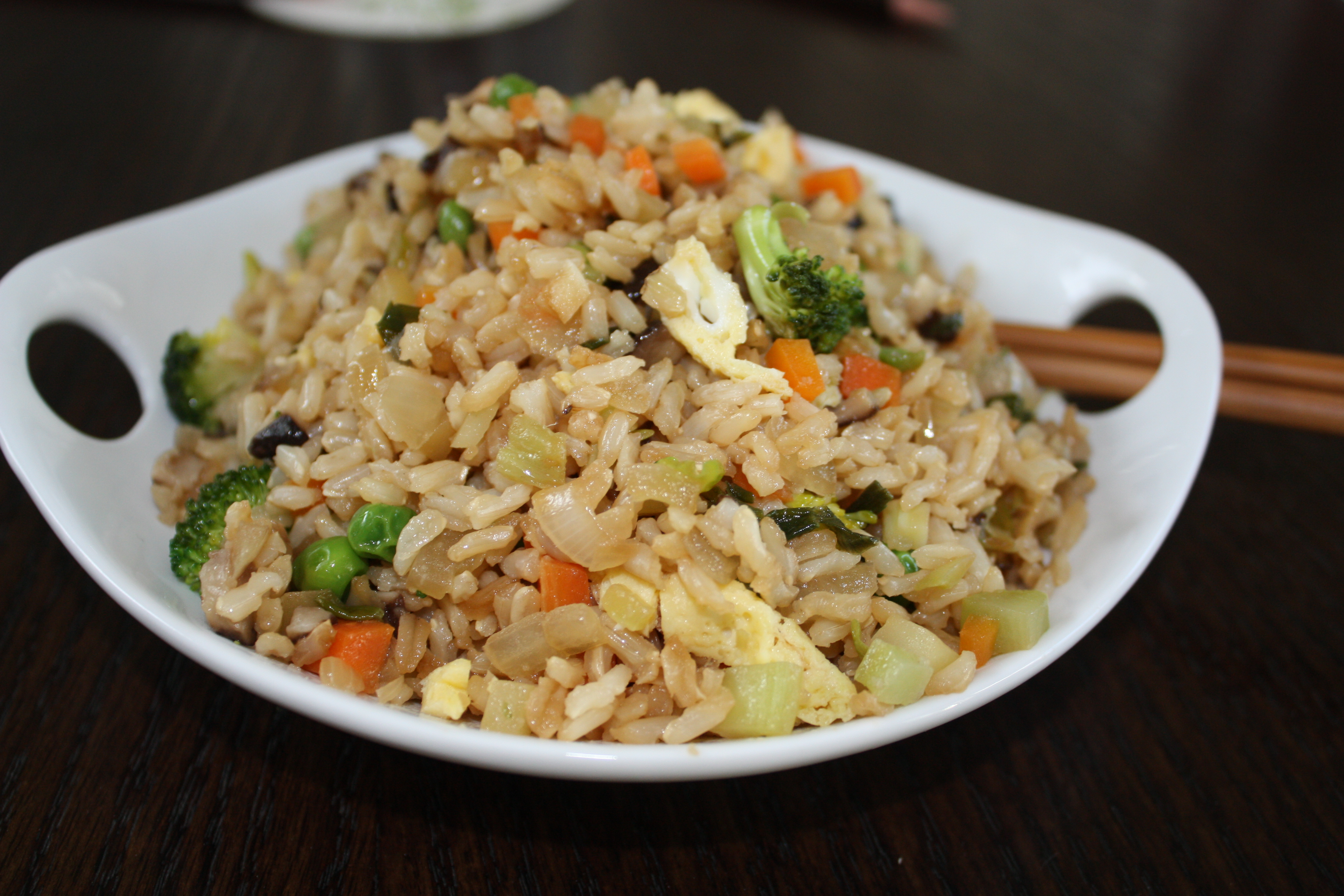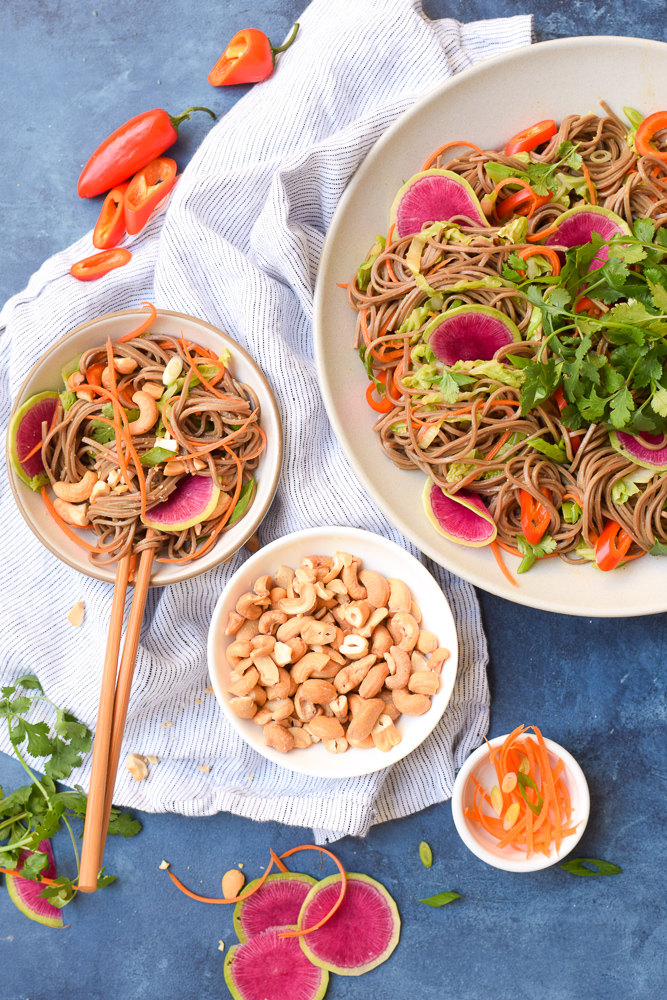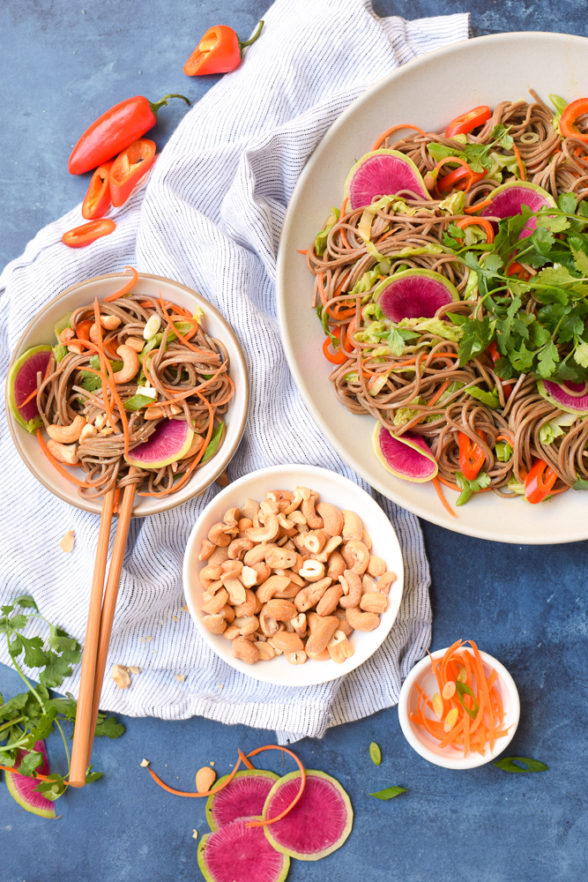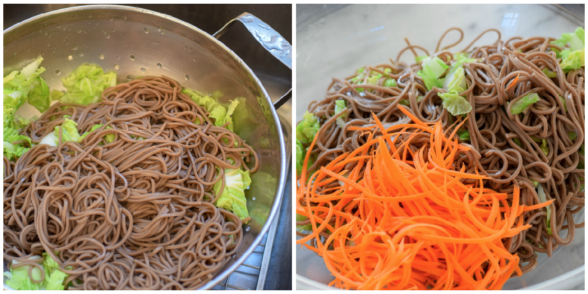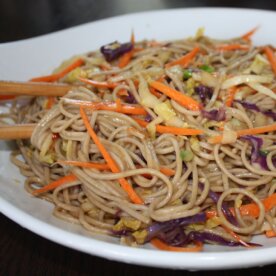Vegetable fried rice recipe
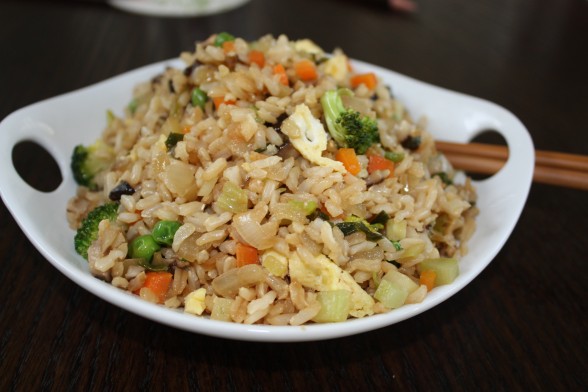
When parents struggle with “what to make for dinner,” one tip I like to offer is to find a dish that everyone likes to eat when you go out, and try to make it at home. Fried rice, however, is a food that I thought I could never make at home. I don’t know why it seemed to be out of my cooking league and only something the family could enjoy on the three annual birthday trips to Benihana. But the last time we were there for Mr. Picky’s birthday, I watched in amazement at what it took for our chef to make fried rice — not a lot! I could make this at home! I took mental notes of what was used on the griddle — cold rice, beaten eggs, a few vegetables, soy sauce and a curious creamy spread our chef told me was “garlic butter.” Hmmm…..
Before I gave this a go at home, I needed to check around a bit to see if there was anything else I needed to know. It seems that fried rice is actually pretty straightforward provided you do one very important thing — use cold, cooked rice. Warnings abounded wherever I turned — one can never, ever, possibly even consider making fried rice with fresh rice otherwise you will have a mushy, disastrous mess. One thing you need to know about me is that I am a naysayer. Oh, really? Well I need to see it to believe it. And I that’s how I learned….never to use fresh rice when making fried rice because I’m here to tell you that you will indeed have a mushy, disastrous mess.
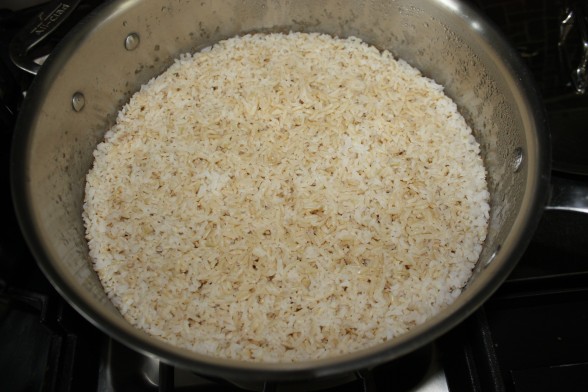
Fried rice is something that was invented in order to use up leftover rice and whatever bits of vegetables and meat you have from the night before. It is eaten as a snack in China, never as a meal. Don’t tell my kids, because they’re getting it as an entree. When you add scrambled eggs, peas, shiitake mushrooms and broccoli to long-grain brown rice, you have yourself plenty of protein. I often pack this the next day in a stainless thermos for the kids’ lunch and I have enjoyed it for breakfast as well. It is actually the perfect little meal with protein, good carbs, and some fat for stable blood sugar and long-lasting energy.
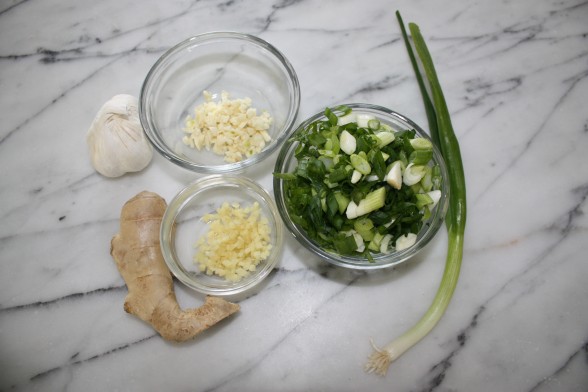
Stir-frying anything requires all your chopping to be done in advance since things move so quickly. You can get this out of the way as early as the night before, if you want. If you have leftover rice and all your vegetables are prepped ahead, fried rice can be cooked in minutes. Traditionally in China, the eggs are added with the rice so that the egg coats each grain of rice. I do it a little differently since Mr. Picky doesn’t enjoy eggs yet. I cook the beaten eggs in ghee (a clarified butter great for higher heat cooking) first and then remove them, chop them up and add them in at the end. That way Mr. Picky can pick out all the egg easily.
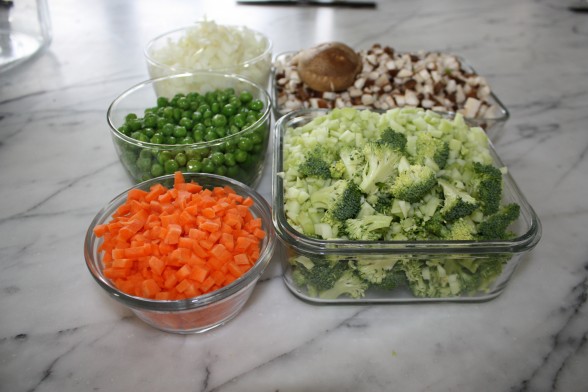
You can really add whatever vegetables you have on hand and you certainly don’t need to use as many as I do. (The vegetables above were used in fried rice I made for a class where the recipe was doubled.) The key is to dice everything pretty small, about the size of peas, although the broccoli can be slightly larger. That way you can stir-fry them in the wok or pan and you don’t need to blanche them in a separate saucepan. I like washing dishes as much as Mr. Picky likes eggs. If your picky eater won’t go for brown rice, he’ll never know it here. The shoyu is going to change the color of the rice to brown anyway. To make this gluten-free, substitute wheat-free tamari and you’re all set. Vegans can drop the egg, use all sesame oil and still enjoy a high-protein dish. Don’t forget — Chinese New Year begins on February 3rd!
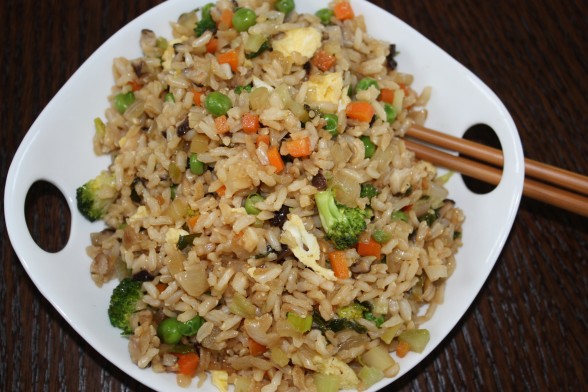
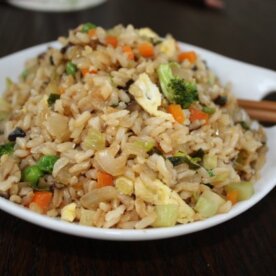
Vegetable Fried Rice
Ingredients
- 2 Tablespoons ghee divided
- 2 large eggs beaten
- 1 Tablespoon toasted sesame oil plus more for drizzling if desired
- 1 teaspoon grated or minced peeled fresh ginger
- 2 garlic cloves minced
- 4 scallions sliced thinly on the diagonal
- Vegetables:
- 1 carrot diced
- 1 onion diced
- ½ cup frozen peas defrosted
- Handful of shiitake mushrooms stems removed; caps wiped clean and diced
- 1 head broccoli cut into very small florets and stems diced, about 2 cups
- 4 cups COLD COOKED brown rice, preferably long-grain
- 2 Tablespoons shoyu or more to taste I tend to go more
- Toasted sesame seeds for garnish optional
Instructions
- Heat a wok or large sauté pan over medium-high heat. Add 1 Tablespoon ghee. Scramble the eggs in the pan until cooked through. Transfer the eggs to a cutting board and set aside.
- Add 1 Tablespoon sesame oil and 1 Tablespoon ghee to the wok. Saute the ginger, garlic and scallions until fragrant, about 1 minute.
- Add the vegetables and sauté until softened. Add the rice and shoyu and toss everything around in the wok until heated through. Chop up the cooked eggs and stir into the rice. Taste for seasoning and add additional shoyu or sesame oil, if desired. Sprinkle with sesame seeds for fun!


